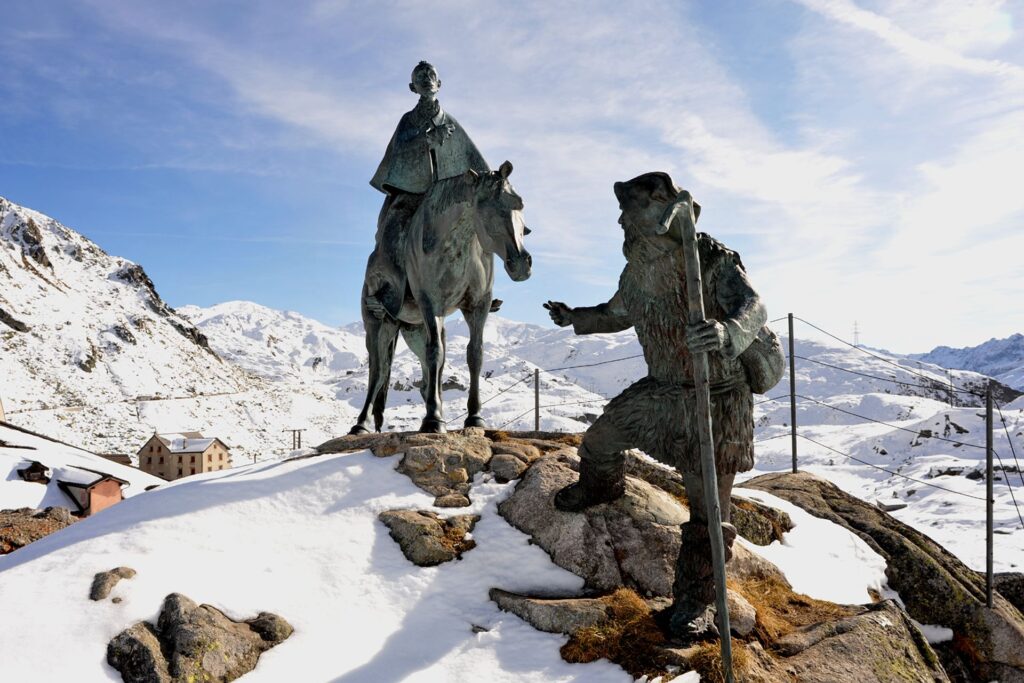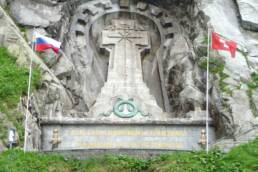That isolated Russian flag on a remote peak of the Alps
A monument in the canton of Uri commemorates the troops of General Alexander Suvorov, who on September 25, 1799, sacrificed themselves against the revolutionary French…
There is a remote place in Switzerland where a white, blue and red flag with horizontal stripes flies; a corner where the banner of the Swiss Confederation accompanies the banner of the Russian Federation in the fresh, brisk wind of the Alps.
Waldstätte and the “forest” cantons at the dawn of Switzerland…
This happens on either side of the “Suvorov Memorial” (known among the German-speaking locals as the Suworow-Denkmal or Russen-Denkmal), a monument clinging to the mountain rock in the Schöllenen Gorge, near the Devil’s Bridge.
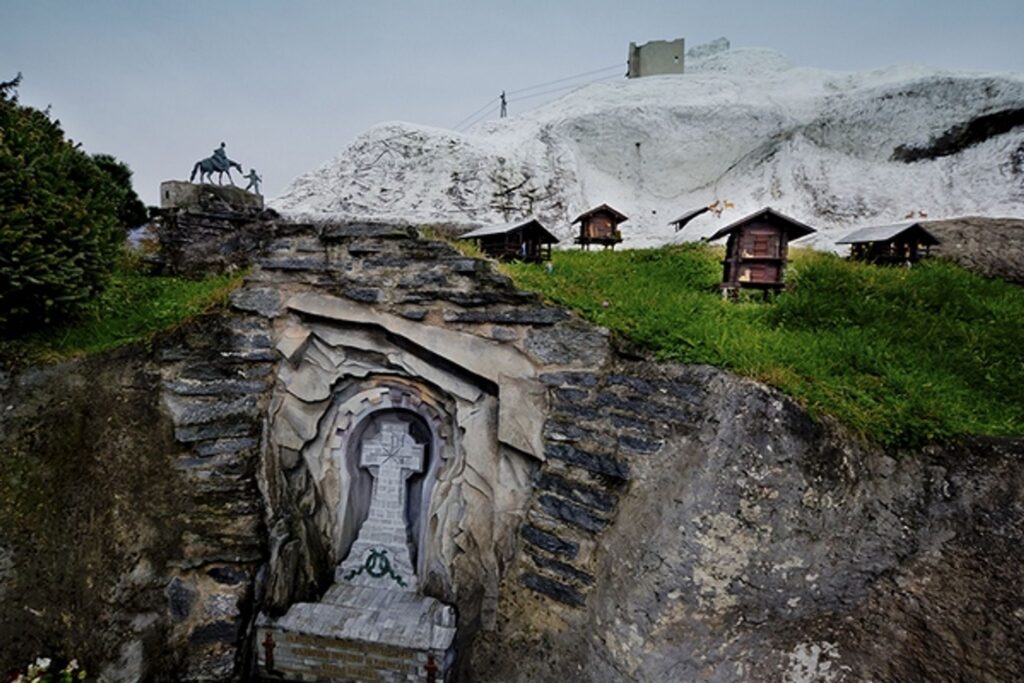
The Devil’s Bridge between Göschenen and Andermatt
This remote and unreachable location lies between the municipalities of Göschenen to the north and Andermatt to the south, with a considerable difference in altitude of three hundred meters. In the past, the wild canyon was a major obstacle on the way to the St. Gotthard Pass, along the road from Canton Uri to Ticino and vice versa.
This obstacle, which for centuries was almost insurmountable, almost completely isolated the Ursera Valley or Urserental, whose life in the past passed in a sort of social and cultural bubble.
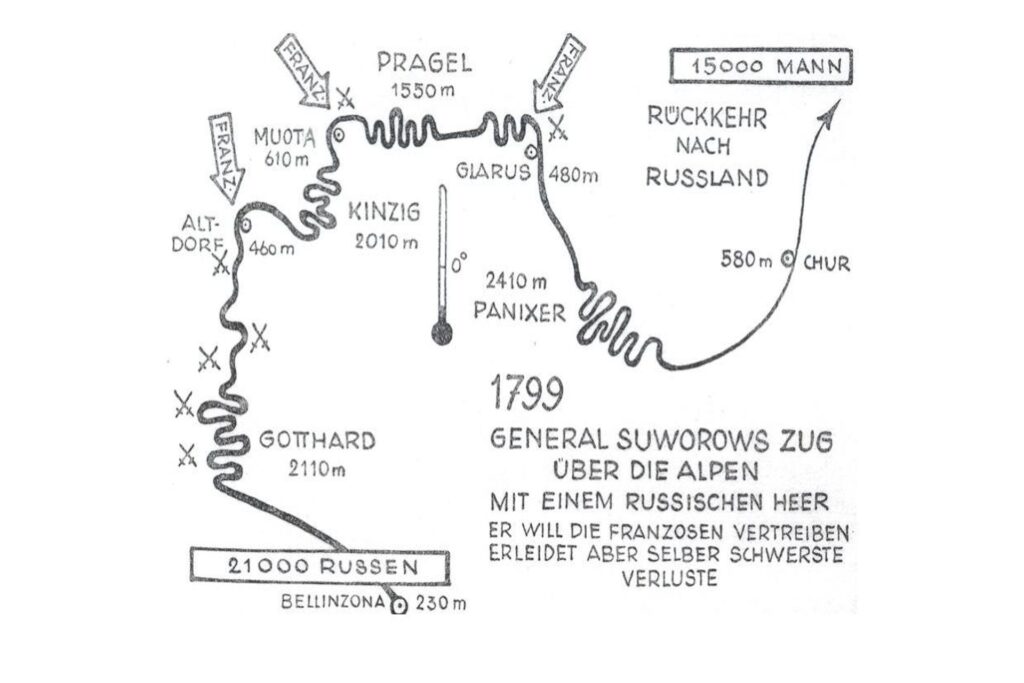
Twenty-one thousand victorious tsarist soldiers on the Ceneri
During the Wars of the Second Coalition, the remote Alpine pass was the terrain on September 25, 1799 of a very violent clash between the French revolutionary troops led by General Claude Jacques Lecourbe and the “allied” army of European states commanded by General Alexander Vasiljevic Suvorov.
The previous September 15, the Russian forces had in fact reached Mount Ceneri with 21,000 men and subsequently defeated the French in a battle at the Gotthard Hospice on the 24th.
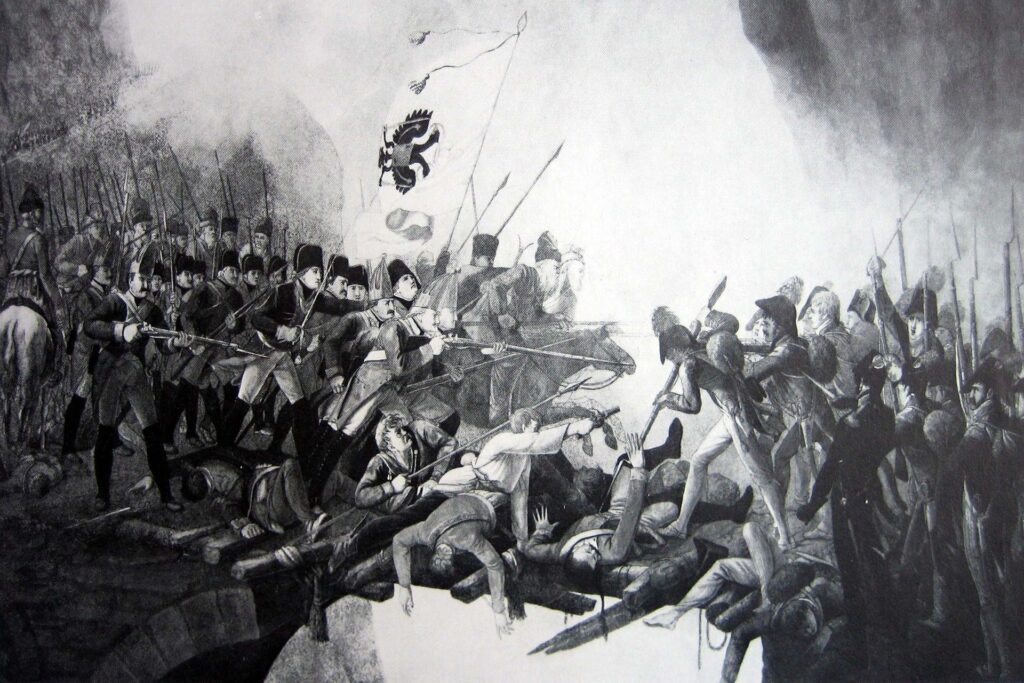
Wooden beams and leather straps against the abyss
The Napoleonic military then filled the Urnerloch tunnel with rubble and debris and blew up the Devil’s Bridge with gunpowder in order to slow the enemy advance.
The following day Suvorov organized the arrival of wooden beams from the surrounding woods, tied them together with the bands of officers’ uniforms, thus erecting an emergency bridge and forced the passage, but with great Russian losses due to transalpine counterattacks.
Swiss monuments? A “hidden” treasure to be valued….
The monument was erected exactly one century later in the period 1895-1898, according to the plans of the architect Alexander Werschinsky and with the approval of the Swiss Confederation, in memory of the Russian soldiers who died in that distant battle while crossing the Alps under the command of the high czarist officer.

Dmitry Medvedev’s tribute 210 years later
The land on which the Suworow-Denkmal or Russen-Denkmal stands has been ceded in perpetual ownership to the Russian Federation. Contrary to erroneous and frequent “fake news”, the land is neither an extraterritorial zone nor an enclave of Moscow on the territory of Bern: the entire monument is in fact listed as a cultural asset of national importance to the Swiss nation.
During his state visit, Russian President Dmitry Medvedev visited the monument on September 22, 2009 together with his Swiss counterpart Hans-Rudolf Merz, coinciding with the 200th anniversary of the terrible military clash…
